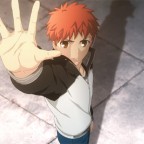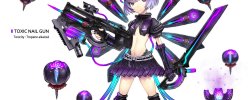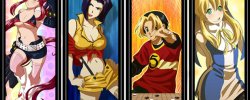Remembering Love: Stretching Artistic Boundaries In ef – A Tale Of Memories

For many American anime fans ef – A Tale of Memories might be too new to reminisce about, because it came out in late January 2012. But I’ve seen this anime back in 2007 and have been the proud owner of the Japanese Blu-ray edition since 2008. I have fond memories of this series – the series that reminded me that anime is not just a medium but one of the most elaborate art forms to come out of Japan.
I always believed that anime had artistic value and intellectual value. Intellectual anime aren’t hard to find, which is one of the traits that differentiate anime from Western animation. I’ve also seen some anime with artistic imagery throughout the years, but in my sub-conscience I had always believed that the artistic traits of anime can only be found in still imagery. The opening of Elfen Lied and Sora no Woto? That’s art. The way Kusanagi Makoto uses her camouflage gear to fade into the cityscape in the original Ghost in The Shell movie? That’s also art. which appears only in the cream of the crop, and even than only for an instance. That all changed But these were small instances and I though the artistic power of anime lies in capturing these small instances of strong emotions. This all changed when I watched ef – A Tale of Memories. This series doesn’t portray art – it is art. Today I will write about to the way ef stretches the boundaries of art presentation in anime.
In ef – a tale of memories the art is not driven by the story, it is part of the story. One of the strong motifs in this series is color and the lack of color. When characters feel sad or gloomy they lose their colors or fade away. When someone is feeling good or extremely happy he or she literally glows. One of the main characters – Miyafuji Miyako – cannot find any enjoyment in the world, so whenever we see the world through her eyes it is depicted only in black and white.
During the series another character – Shindou Chihiro – writes a book. The process of the writing itself has some interesting aspects, but a much strong impact is made when the book is read. As someone reads the book and we are transformed into the world the book depicts we can see words and sentences used in the book drift in the background. This is interesting not only because they are but because they interact with the word they created. As the story tells us that a girl is all alone the words fly away, as if fleeing from the scene to make the notion of her loneliness more believable. When Chihiro talks about the problems she have had in maintaining consistency in her story the words she used replace places or disappear to accentuate that.
ef uses artistic elements not only on static backgrounds but also in motion, something that many anime don’t bother to do (or don’t have the budget to do). Scenes have a lot of layers and the series plays with them. In the first episode, when Miyafuji Miyako and Hirono Hiro sit on the swings in a park under the starry skies the scene shows only the layers the define their bodies and fill it with the starry sky and the gloomy park. Instead of showing two characters inside a park ef redefines visual conventions and shows the park inside two people.
Another skillful example of the use of layers appears in episode three when another couple – Chihiro and Asou Renji – are walking at the beach. (Spoiler ahead) As the ocean waves splashes on the shore in the background Chihiro tells Renji how she is able to remember about her memory problem and about him because she memorizes it each night. Suddenly the screen turns white, with only an empty layer of Chihiro’s upper body remaining. In this Chihiro-shaped layer we can see the sea water flowing from side to side. The movement of the sea water bears an uncanny resemblance to that of electromagnetic waves emitted across Chihiro’s brain. Are we watching the sea or her brain waves?
Not many anime series make the bold decision to use their art to tell their story. ef – A Tale of Memories made me understand that while these instances are rare they can be very effective. It made me remember why I kept watching anime for so many years. It made me remember that anime is undoubtedly one of the more elaborate forms of art that came out of Japan in modern history.
The art of ef (click to enlarge). From left to right: The world as seen through Miyafuji Miyako’s eyes. The words that fill the world of Shindou Chihiro’s story. Words that disappear from Chihiro’s memory. The midnight sky inside Miyako’s layer. The sea waves inside a layer portreying Chihiro’s head.
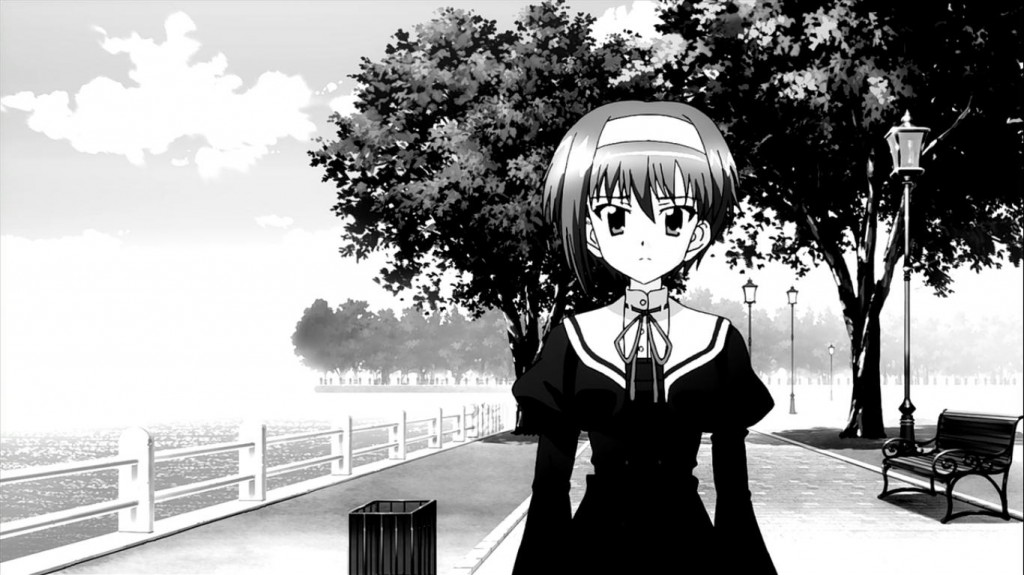 |
 |
|
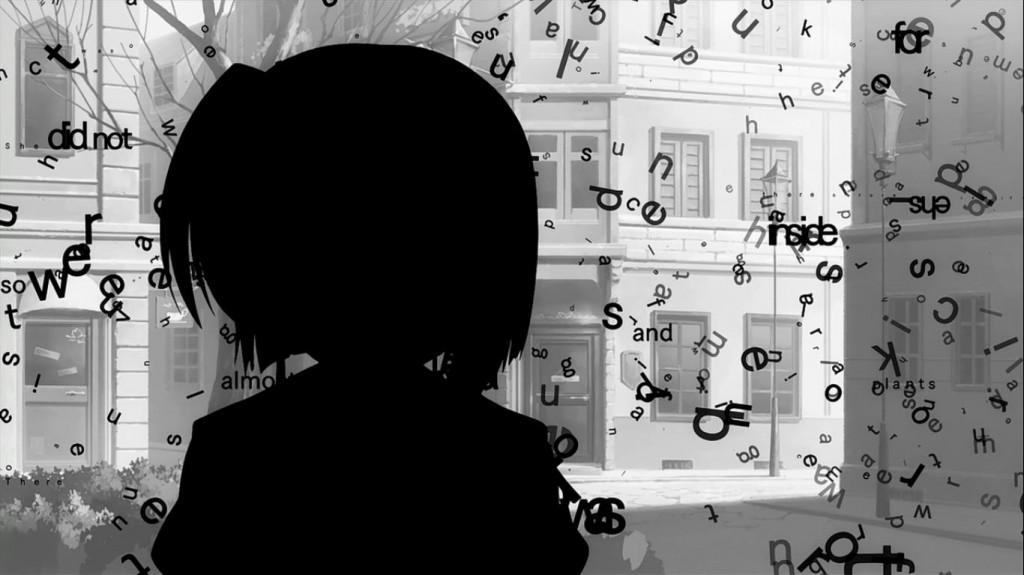 |
 |
|
 |
Back to the previous entry | Continue to the next entry
Other participants in the Remember Love Series (week 2):
Chikorita157: Clannad After Story Part II
Deluscar: Gintama and the Art of Seriousness
Foomafoo: Kare Kano – Role of Family Backgrounds to Character Relationships
Justin: Reliving Daikichi and Rin Once More (Part 2)
Marina: Aria the Natural and Neo Venezia’s Cat Kingdom
Trzr23: Haibane Renmei: A Whole New Level
Yumeka: Haruhiism






